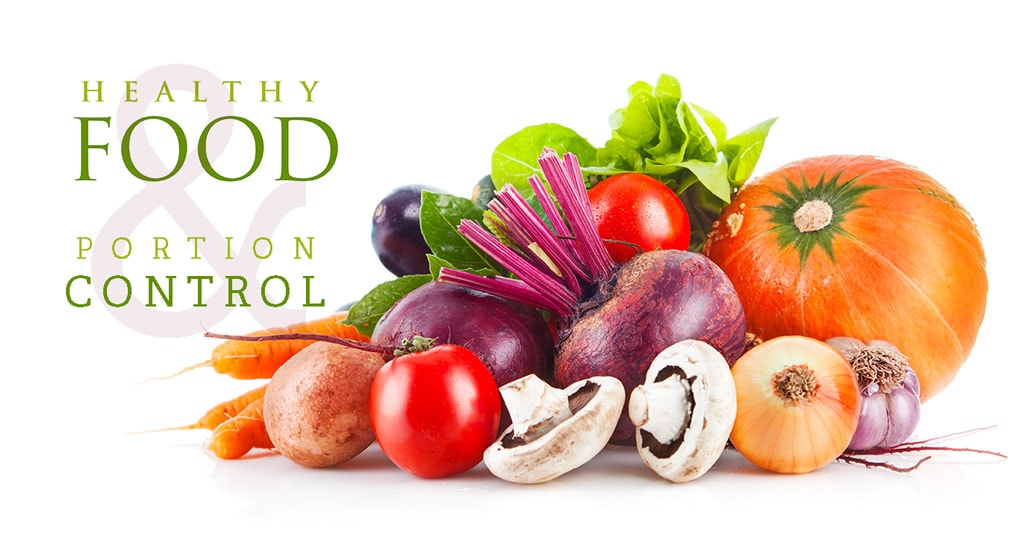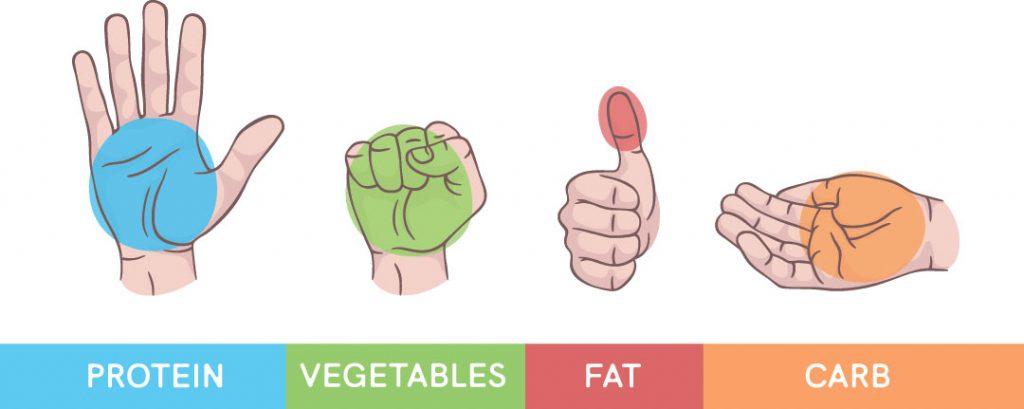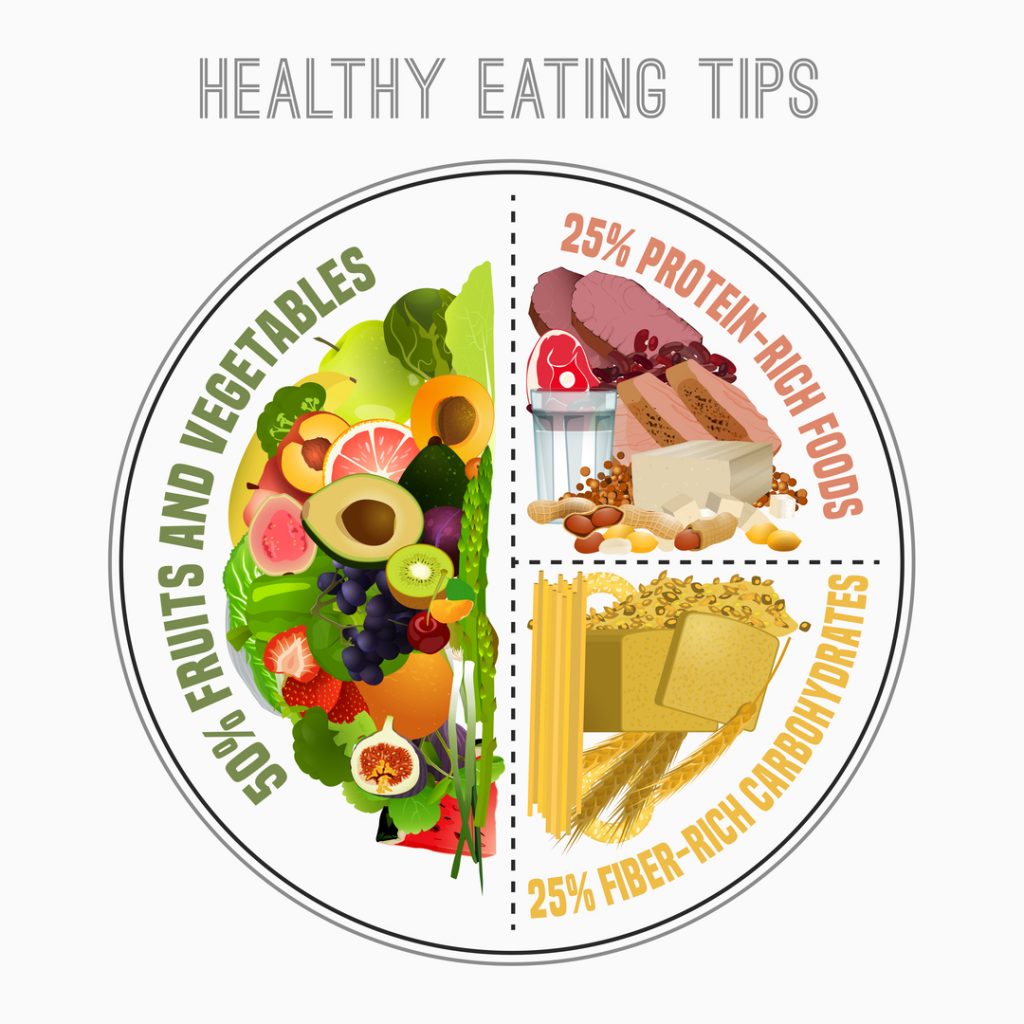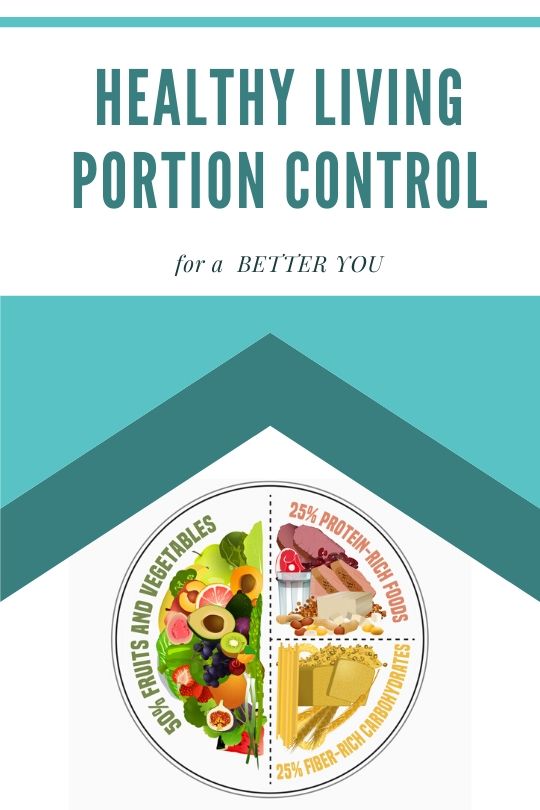Many of us underestimate the power of food portioning or Portion Control. Proper portion sizes during meals can keep you healthy and help to ensure that your body is getting the key nutrients that it needs in order to survive.

Not only that, but maintaining portion sizes can keep you from overeating, help you to lose weight, or even maintain your current weight by limiting your daily calories so that you aren’t overindulging and taking in more than your body needs.
What is the size of a portion?
Portion sizing, like most other things, requires educating yourself, and practice to get it right. Different age groups and activity levels can play a roll in your daily calorie needs. While the idea of portion sizing can be intimidating, it is actually much easier than you may realize. Thanks to visual portion control charts, you can see exactly how much you need at every meal using common objects as a proper measure.

Keep these portion sizes in mind when choosing a portion of your favorite foods:
- Protein ~ The size of your fist
- Carbohydrates ~ The size of your hand cupped
- Vegetables ~ The size of your fist
- Fats ~ The size of your thumb
How do you limit portion sizes?
Eating healthy is only part of the battle, keeping your portion sizes in check is the other. You want to have plenty of healthy foods in your diet and to limit the amounts to the recommended portion sizes because too much of anything can sometimes be a bad thing. A well-balanced diet of healthy foods is much more preferred overeating too much of one category and not enough of another.
Healthy food groups include:
- Vegetables
- Fruits
- Grains
- Dairy
- Protein
You can limit your portion sizes by following along with the assistance of a portion control chart. These can help you to see exactly what you need to do so that you can recreate it for yourself.
Take your round plate and divide it into equal-sized quarters by drawing a line down the center and across.
One quarter should be reserved for grains, another for proteins and then 2 sections should be for vegetables.
If you need more of a visual, you can also use your hand as a measuring device.
- Open the palm of your hand, excluding your fingers, look at the round palm. This should be used as a visual reference for a portion of protein.
- Close your fist, this is a serving of vegetables or fruits.
- Turn your hand, palm up and make a cup as if someone was going to pour something into your hand for you to catch. Let this be your serving of grains and carbs.
- Healthy fats can be measured by using your thumb as a serving size. Your entire thumb counts as a tablespoon whereas the tip of your thumb to the first joint is seen as a teaspoon.

How much should you be eating daily?
According to the USDA, average daily portion sizes should be kept at:
- 2 to 3 cups of vegetables
- 1.5 to 2 cups of fruits
- 5 to 8 ounces of grains
- 3 cups of fat-free or low-fat dairy
- 5 to 6.5 ounces of protein foods
- 5 to 7 teaspoons of oils
Other great tips for portion size control
Drink Water
Drinking an 8-ounce glass of water before each meal not only helps you to remain hydrated but also helps to curb some of your appetites. A lot of the time thirst will disguise itself as hunger, and cause us to eat more than we should. By drinking water before each meal, you can feel more full, have better digestion, and keep from ingesting too many calories.
Keep a food log
With our busy lives, it’s easy to forget a thing here and there. Many people forget what they had for breakfast, and others forget to eat at all! Keep a food log of the foods you eat and the time you ate as well as the amount. Doing this not only helps you to get a visual reference but can also help you to spot unhealthy habits that may need your attention.
Always serve food on a plate
This one can sound a little crazy, if there’s only a portion of food left inside a container, why dirty a dish? The reason is that you may find that the portion of food left in the container is actually more than you originally realized. By placing it on a plate before eating, you can be much more sure of the amounts your eating.
Eat slowly
Have you ever watched a food eating competition with people stuffing their faces as fast as possible to eat as much as they can in order to win a prize? With contestants, their goal is to eat as much as possible before their body decides that it is stuffed. Everything you swallow takes a few seconds to reach your stomach, but it takes a few minutes for your stomach to send a signal to your brain that you are feeling full.
Eating slowly and actually chewing your food helps to keep you from eating too much. It also aids in better digestion because it’s broken into smaller pieces and as you chew your body makes more saliva to help break down the food.
Use smaller dinner plates
Have you noticed that all-you-can-eat buffets have been using smaller dinner plates? That’s because smaller plates mean that you need to give yourself smaller portion sizes. While this might save buffets money, it also helps you to prevent creating too much food waste or eating too many calories. Using this same technique at home can have you trim your waistline and your grocery bill.
Ask for smaller portions
Restaurants often give large portion sizes and while that’s definitely a way to get your money’s worth, you can ask for smaller portions. Some places even have a discounted menu for smaller portioned and healthier meals.
If they don’t want to accommodate the request, you can simply use your hand as a portion control size reference when eating and reserve the remaining food in a to-go container to reheat later.
By staying aware of your food intake and maintaining the proper portion sizes that you need, you can live a healthier lifestyle. It’s a simple change, but one that requires effort and practice to make it more routine.



Submit a Comment